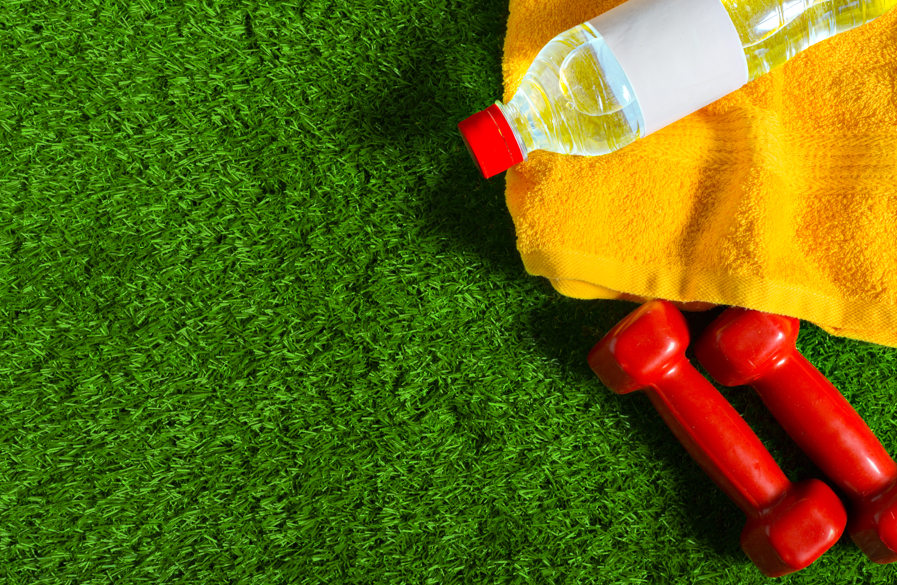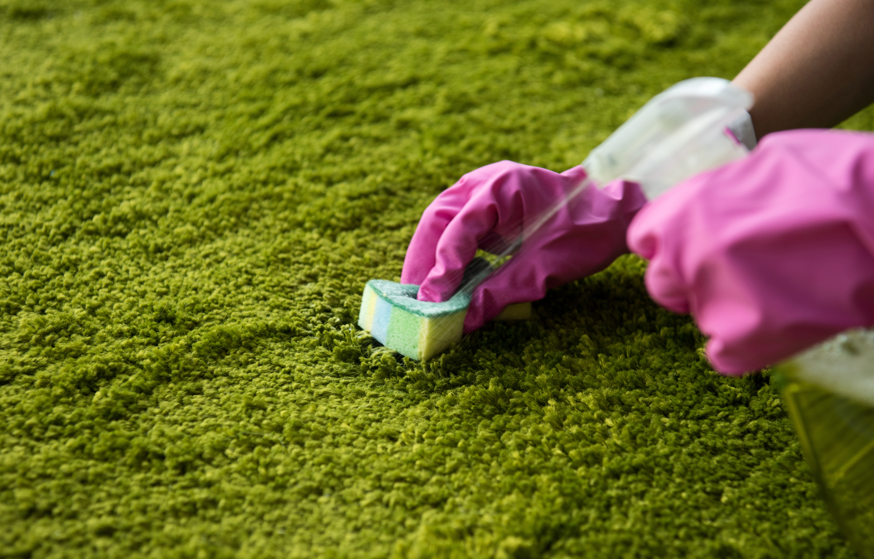How to Clean Artificial Grass: A Complete 2025 Guide
- Vanshika Thareja

- Jul 21
- 5 min read
This post contains sponsored content, affiliate links, and or paid guest contributions. We value transparency and strive to follow FTC guidelines.

Table of Contents
Introduction
Why Cleaning Artificial Grass Is Important
How Often Should You Clean Artificial Grass?
Essential Tools and Supplies
Step-by-Step Guide: Routine Cleaning
Deep Cleaning Artificial Grass
Removing Common Stains and Spills
Cleaning Up After Pets
How to Clean Artificial Grass After Rain or Snow
Seasonal Maintenance Tips
Preventing Weeds and Mold
Mistakes to Avoid
Eco-Friendly Cleaning Options
FAQs
Conclusion
Artificial grass, also known as synthetic turf, has become a popular alternative to natural lawns. It’s low maintenance, looks lush year-round, and eliminates the need for mowing, watering, or fertilizing. But that doesn’t mean it's maintenance-free. To keep it looking great and lasting for years, regular cleaning is essential.
Whether you have turf in your backyard, a rooftop, playground, balcony, or pet area, this comprehensive guide will show you how to clean artificial grass the right way.
2. Why Cleaning Artificial Grass Is Important

Here’s why consistent maintenance matters:
a. Preserve Appearance
Keeps turf looking fresh, green, and realistic.
b. Extend Lifespan
Removes debris and prevents long-term damage from buildup.
c. Hygiene
Prevents bacteria growth, especially in pet zones.
d. Prevent Odors
Stale water, pet urine, and organic matter can create smells if not cleaned.
e. Avoid Damage
Dirt, moss, and weeds can compromise drainage and turf backing.
3. How Often Should You Clean Artificial Grass?
Frequency depends on usage:
Area Type | Light Use | Heavy Use | With Pets |
Balcony / Rooftop | Once a month | Twice a month | N/A |
Backyard | Once a month | Biweekly | Weekly |
Pet Area | Twice a week | Weekly | 2–3x per week |
Playground / Commercial | Weekly | Multiple times per week | As needed |
Adjust based on weather, tree coverage, and local pollution levels.
4. Essential Tools and Supplies
Before diving in, gather these essentials:
Tools
Plastic rake (avoid metal tines)
Stiff bristle broom or brush
Leaf blower or vacuum
Garden hose
Power washer (for deep cleaning)
Pet waste scoop
Cleaning Supplies
Mild dish soap or artificial turf cleaner
White vinegar or enzymatic cleaner (for pet odor)
Baking soda (odor neutralizer)
Weed killer (turf-safe, non-toxic)
Moss and mold remover (biodegradable)
5. Step-by-Step Guide: Routine Cleaning
Routine cleaning keeps synthetic grass in top shape.
Step 1: Remove Debris
Use a leaf blower, rake, or gloved hands to pick up leaves, branches, and trash.
Remove food scraps or animal waste immediately.
Step 2: Rinse with Water
Use a garden hose to rinse dust, pollen, and small debris.
Start from one end and work across in sections.
Step 3: Brush the Grass
Brush against the grain to keep fibers standing upright.
Helps redistribute infill (if present) and fluffs matted areas.
Step 4: Spot Treat Minor Spills
Mix mild dish soap with water and scrub using a soft brush or cloth.
Rinse thoroughly with clean water.
6. Deep Cleaning Artificial Grass

If your turf hasn’t been cleaned in months, or you’ve had a lot of foot traffic or rain, follow these steps:
Step 1: Clear the Surface
Remove all items (furniture, toys) and debris from the turf.
Step 2: Power Wash (Optional)
Use a low-pressure power washer for deep rinsing.Important: Spray downward and keep the nozzle at least 1 ft away from the turf.
Step 3: Disinfect the Surface
Mix 1 part vinegar with 1 part water in a spray bottle.
Spray across the turf and scrub lightly with a brush.
Let sit for 5–10 minutes, then rinse.
Step 4: Deodorize
Sprinkle baking soda on the turf, then spray with vinegar.
The fizzing lifts odors. Rinse thoroughly.
7. Removing Common Stains and Spills
a. Food and Drink Spills
Blot liquids immediately with paper towels.
Mix dish soap with warm water, apply with a sponge, and rinse.
b. Grease or Oil
Use a dry cloth to blot.
Apply mild degreaser (turf-safe) and rinse thoroughly.
c. Chewing Gum
Freeze with ice cubes, then gently scrape with a plastic putty knife.
d. Blood, Wine, or Coffee
Use hydrogen peroxide diluted with water.
Rinse thoroughly to prevent damage.
8. Cleaning Up After Pets
Artificial turf is ideal for pet owners—but it needs regular sanitation.
Solid Waste:
Scoop it up immediately.
Use a pet-safe disinfectant and rinse area thoroughly.
Urine:
Hose down the area daily if possible.
Use an enzymatic cleaner to break down urine proteins and remove odor.
Odor Control:
Mix white vinegar and water (50:50) in a spray bottle.
Spray the area and let dry naturally.
Use baking soda weekly for odor prevention.
Bonus Tip:
Install drainage-friendly sub-base (crushed granite or limestone) during installation to prevent urine buildup.
9. How to Clean Artificial Grass After Rain or Snow
Rain:
Typically self-cleaning; rain helps rinse dust and debris.
After heavy storms, remove branches, mud, and pooled water.
Use a leaf blower to speed up drying.
Snow:
Let snow melt naturally if possible.
For fast removal, use a plastic shovel (not metal).
Avoid salting artificial turf—it can damage the backing and drainage.
10. Seasonal Maintenance Tips
Spring:
Deep clean to remove winter debris.
Inspect edges and seams for lifting or wear.
Summer:
Brush more frequently to prevent matting from foot traffic.
Deodorize regularly in hot weather.
Fall:
Clear falling leaves weekly.
Check drainage areas for blockages.
Winter:
Avoid heavy furniture or foot traffic in freezing weather.
Let snow and ice melt naturally.
11. Preventing Weeds and Mold
Even artificial grass can host unwanted growth if not properly maintained.
Weeds:
Install a weed barrier fabric underneath during installation.
Apply a non-toxic weed killer periodically (safe for pets/kids).
Mold & Moss:
Improve drainage if puddles are forming.
Clean shaded areas more often.
Use moss/mold remover if green patches appear—choose turf-safe brands.
12. Mistakes to Avoid
❌ Using Harsh Chemicals
Bleach, acetone, and ammonia can degrade fibers and backing.
❌ Using Metal Tools
Metal rakes and shovels can tear or puncture turf.
❌ Pressure Washing Too Close
High PSI near the surface can displace infill or damage turf.
❌ Ignoring Pet Waste
Even synthetic turf can harbor bacteria and odor.
❌ Allowing Standing Water
Check for clogged drains or uneven installation.
13. Eco-Friendly Cleaning Options
For sustainable households, there are green alternatives:
Vinegar + Water Spray: Natural disinfectant
Baking Soda: Odor neutralizer
Eco Enzyme Cleaners: Made from citrus and plant-based ingredients
Compostable Pet Waste Bags
Solar-powered blowers for zero-emission cleaning
Choosing eco-friendly products helps reduce your environmental impact—especially important in outdoor spaces near plants and pets.
FAQs
Can I vacuum artificial grass?
Yes—use a wet/dry shop vac for dry debris only. Avoid home vacuums with brushes that may damage turf.
Does synthetic grass attract bugs?
Much less than real grass, but cleaning up food spills helps keep insects away.
How do I fluff matted turf?
Use a power broom, stiff push broom, or rake against the grain.
How can I keep artificial grass cool in summer?
Rinse with water during hot days. Add shade structures like umbrellas or sails.
What happens if I don’t clean my turf?
Dirt buildup, odors, flattened fibers, and even moss or mold growth over time.
Conclusion
For those looking to maintain their artificial grass with professional assistance, consider reaching out to local experts who specialize in landscape maintenance. Regular cleaning and care can significantly extend the life of your artificial turf, ensuring it remains vibrant and lush. If you're in the region and need tailored advice or services, visit our Northern Ohio for comprehensive solutions that cater to your specific needs. Whether it's routine cleaning or addressing more complex issues, having a reliable partner can make all the difference in preserving the beauty and functionality of your artificial grass.
How to Clean Artificial Grass: A Complete 2025 GuideArtificial grass may be low-maintenance, but not no-maintenance. With the right cleaning habits, you can keep your turf looking lush, smelling fresh, and functioning perfectly for years. From routine brushing and rinsing to deep cleaning and odor removal, caring for synthetic grass is easier than it seems.
Whether you're a pet owner, a parent, or a weekend entertainer, keeping your turf tidy means protecting your investment and enjoying a cleaner, safer outdoor space year-round.



Comments